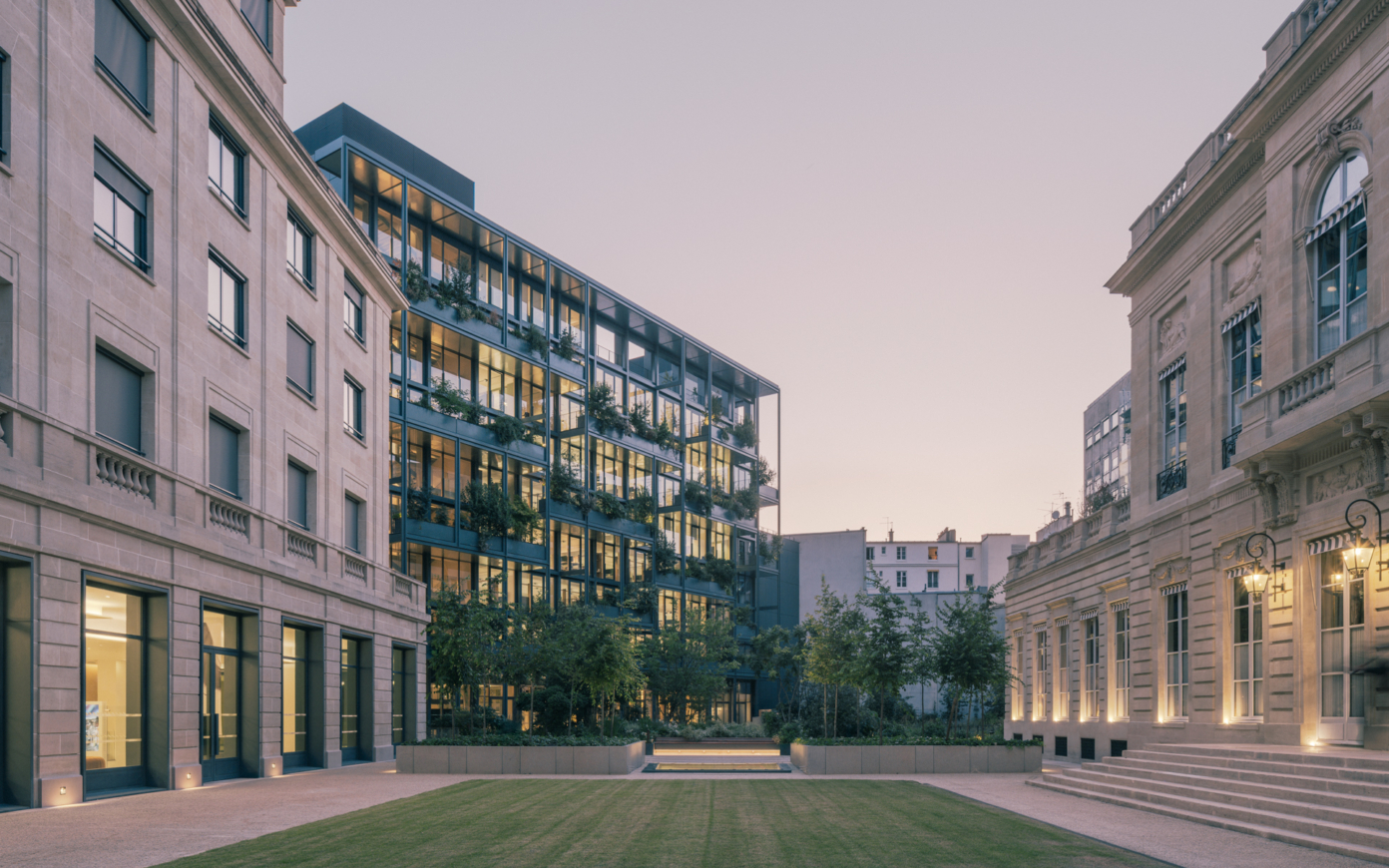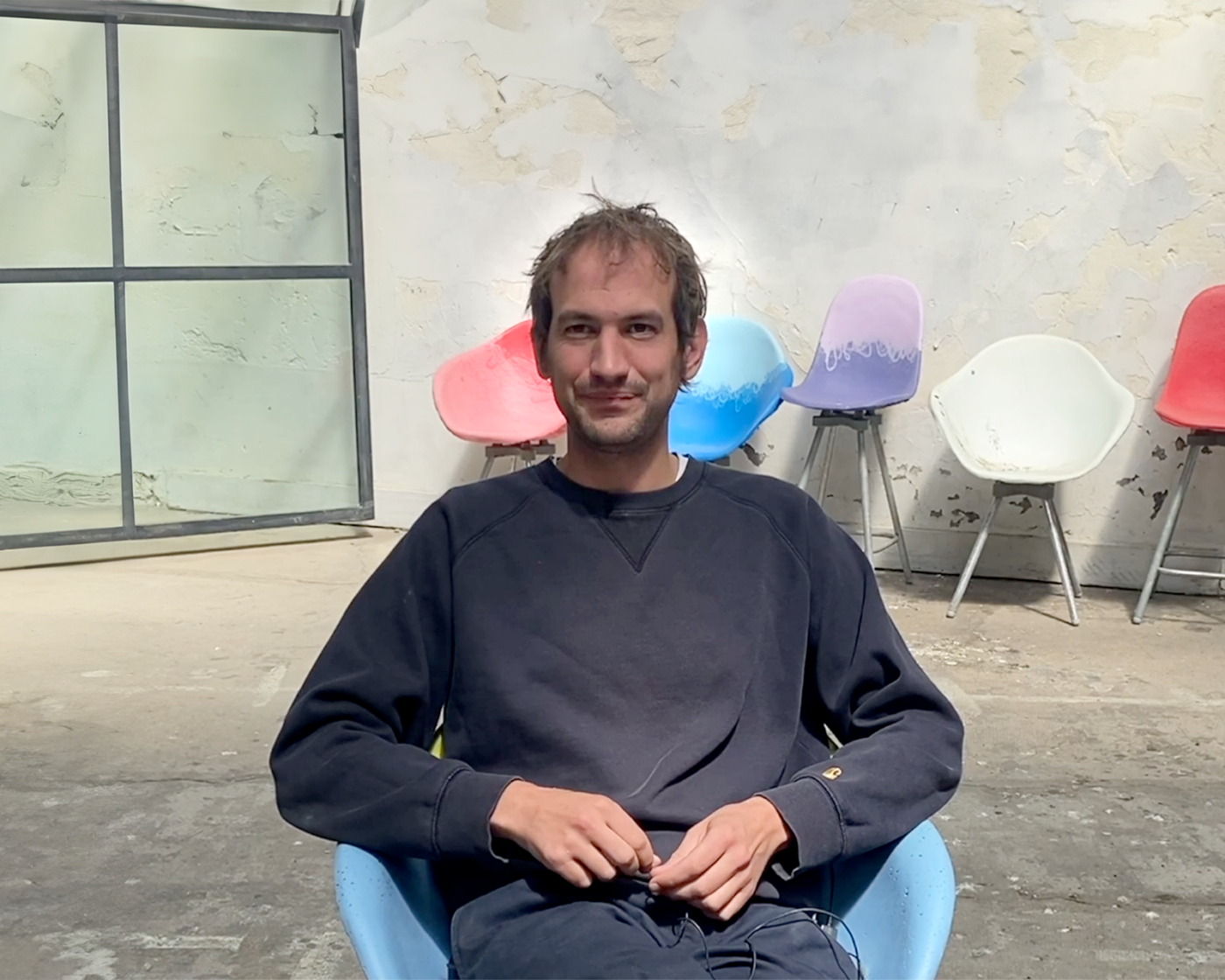Nestled in the heart of the Bièvre Valley, the HEC campus embodies the living archive of modern tensions between nature and knowledge, heritage and forward-thinking. In a world undergoing transition, the school chooses to revisit this exceptional environment and integrate it into a sustainable, inclusive, and ambitious strategy. PCA-STREAM proposes a project that is both contextual and transformative: restoring coherence to a fragmented domain, reactivating landscape and social continuities, and creating a new embodied centrality : the Campus Heart, to give form to the HEC of the 21st century. A place of learning in and with the landscape. A campus aligned with its time.
Experiencing nature

PCA-STREAM is responding to AXA’s ambition to embody its commitment to a sustainable transition through the complete transformation of its global headquarters on Avenue Matignon. The new complex fosters innovative and responsible uses around an exceptional 21st-century garden.

At the initiative of the Comité Grande-Armée, PCA-STREAM delivers "Grande-Armée 2030", a strategic vision for reintegrating the Avenue de la Grande-Armée into the urban dynamic of Paris's historic thoroughfare and adapting it to the challenges of the 21st century city.

Located near the Saint-Lazare train station, these new-generation offices in a former military barracks combine the best of two architectural heritages. They offer a comfortable and prestigious workplace, turned towards nature and the well-being of its users, French law firm Gide-Loyrette-Nouel. The building's heritage is magnified and remodeled, enhancing its attractiveness and competitiveness, while helping to write a new page in the history of Paris's ever-changing urban fabric.
“ Capturing the conflict between the songs of nature and urban noise. ”
“ Capturing the conflict between the songs of nature and urban noise. ”
The melody of the living
Frédéric Jiguet is an ornithologist and professor at the Muséum d’Histoire Naturelle in Paris. In particular, he leads the STOC program: Suivi Temporel des Oiseaux Communs (Temporal Monitoring of Common Birds), which aims to understand the impacts of global change and the consequences of human activities on birds. We met him in situ, capturing the conflict between nature’s songs and urban noise.

Designing Soundscapes
Nadine Schütz is a sound architect. She lends a new dimension to urban landscapes thanks to sound installations and work on the acoustic environment. In this way, she highlights the role of sound in the sensory relationship of humans to their surroundings and in raising environmental awareness.


Transforming the City into a Museum for Contemporary Nature
As we are reconsidering our place as humans within nature, philosopher Emanuele Coccia investigates the natural phenomenon of metamorphosis and develops it into a philosophical concept that enables us to think about ourselves as part of a single breath of life that passes from one life form to another. Opposed to a penitential vision of environmentalism, he disagrees with the idea that the living should be viewed as fundamentally subsumed in the issue of ecological balances, life being a perpetual metamorphosis, poles apart from any notion of equilibrium. He champions the idea of a transformation of cities into “museums of contemporary nature” in order to overcome the conventional nature—culture divide and reinstate an urban interspecies approach focusing on cohabitation between all life forms and biodiversity.

The RER A Regional Express Railway: walking as a design tool
Manon Denerier recently graduated from the interior design school École Camondo, receiving full honors for her exploratory work along the regional express railway line RER A. Shedding the functionalist logic of mobility (11 hours on foot instead of a 33-minute ride), she engaged in a sensory experience of a journey through “invisible cities,” proposing micro-amenities to raise their profile.


Toward a wild Renaissance
The fundamental shift in the way mankind perceives and views its position in the world has earmarks of a new “Renaissance” according to Guillaume Logé. He observes many parallels with that of the fifteenth century, interpreted as a transhistorical phenomenon, in particular through artworks which have a symbiotic perspective that move beyond the modern monofocal perspective, or humans. More than the Anthropocene, he considers that the idea of the wild is the new frame of reference that will replace the great narratives, which disappeared with postmodernity. By leaving behind the human perspective and moving on to collaborations with the living, he calls into question our separation from it. He therefore views contemporary artists as moving ahead in the experimentation of the relational dimension within the turning point we are living through.


Letter to Pierre Huyghe
Nicolas Bourriaud sent this letter to Pierre Hyughe while the artist was on an expedition for several months. The historian and art critic questions the artist’s approach, addressing notions such as spare time and exploration in the light of a finite, well-known and already completely mapped world. How can the artist create knowledge on contemporary space without this knowledge being categorized in the existing disciplines? Nicolas Bourriaud is an art historian, art critic, theorist and exhibition curator. Since 2016, he is the director of the future Montpellier Contemporain (MoCo). A visual artist, Pierre Huyghe has long been associated with relational aesthetics, having explored the relationship between reality and fiction, the issue of memory, of expeditions and exhibitions. A recipient of many awards, and having been exhibited in the most prestigious international cultural institutions, he is now investigating the complexity of organic life, which is a way of departing from the control of authorship to create the conditions for the emergence of a self-evolving work. Catalog text for the GNS (Global Navigation System) exhibition, Palais de Tokyo, Éditions du Cercle d’art, Paris, 2003 (pp. 118‒9)
Explorer Toutes les thématiques
 stream voices
stream voices
Eager to share more generously the results of its collaborations and research, PCA-STREAM publishes STREAM VOICES, its online magazine!











